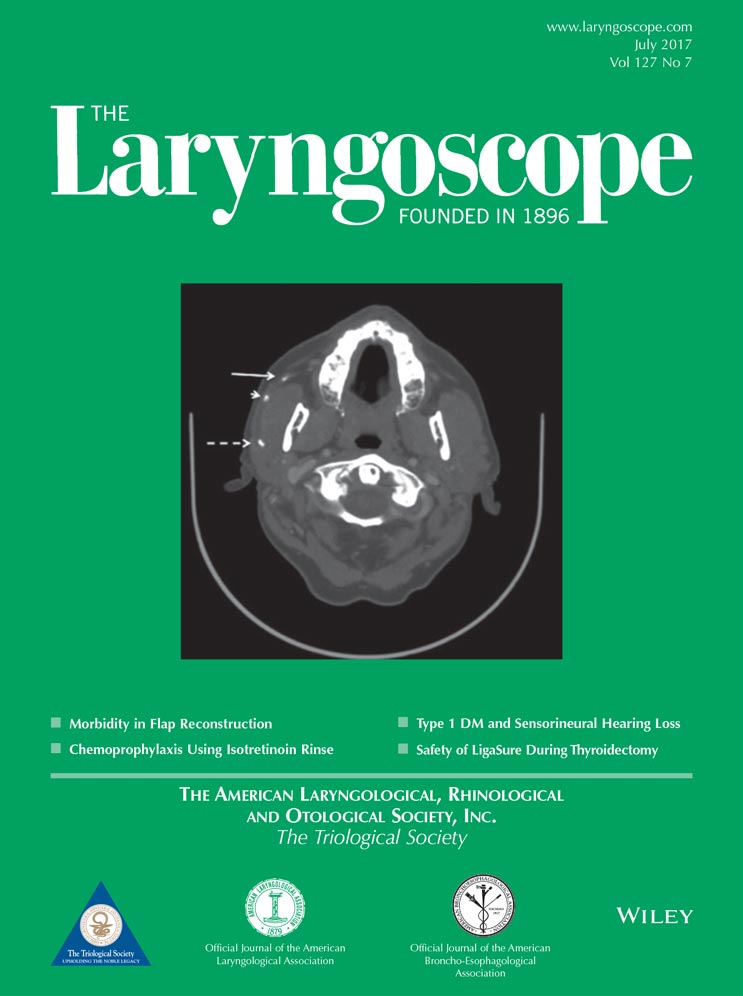Topical oral cavity chemoprophylaxis using isotretinoin rinse: A 15-year experience
The authors have no funding, financial relationships, or conflicts of interest to disclose.
Abstract
Objectives/Hypothesis
To determine the utility of isotretinoin oral rinses as a method of chemoprevention for recurrent oral cavity squamous cell carcinoma (SCC), carcinoma in situ, and dysplasia.
Study Design
Retrospective cohort study.
Methods
One hundred forty-three patients were initially enrolled in the study; however, 18 were excluded due to inability to tolerate therapy. The included patients were classified into four groups. Group 1 included patients with multiple early stage oral cavity lesions following initial resection. Group 2 included patients with SCC in situ after excision. Group 3 included patients with multifocal dysplasia following initial CO2 laser ablation. Group 4 included patients with a history of treated oral cavity SCC with new leukoplakia lesions proven to be dysplastic. Fifty-three patients in the control group did not use post-treatment isotretinoin rinses due to various reasons, whereas 72 patients completed therapy. Minimum use of isotretinoin rinses was 12 months, and minimum follow-up was 24 months. During the follow-up period, all recurrences of carcinoma, in situ disease, and dysplasia were noted and compared with a Fisher test of fit. A Bonferroni correction was applied to increase accuracy and strength of comparison.
Results
Using a Bonferroni correction, the significance threshold was 0.0125. By that cutoff, isotretinoin rinses were found to be associated with lower recurrence in groups 1 and 3 (P = .00014, P = .00002, respectively) but not in groups 2 and 4 (P = .4, P = .3846, respectively).
Conclusions
Oral isotretinoin as chemoprophylaxis for patients treated for oral cavity squamous cell carcinoma, in situ disease, or dysplasia may be beneficial in decreasing recurrence rate.
Level of Evidence
4. Laryngoscope, 127:1595–1599, 2017




